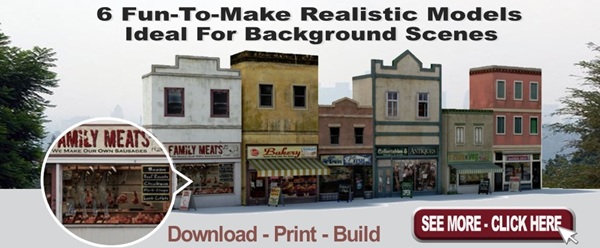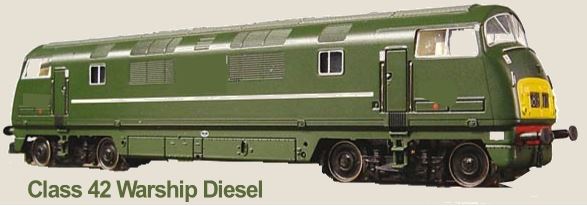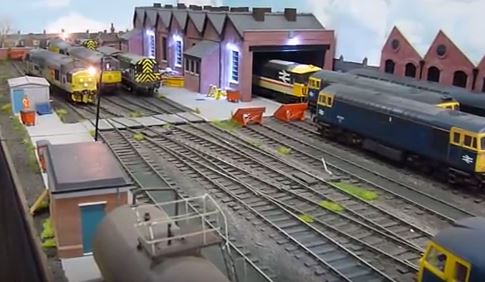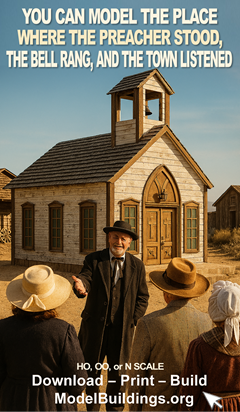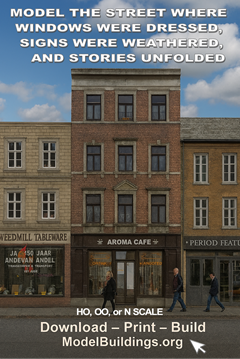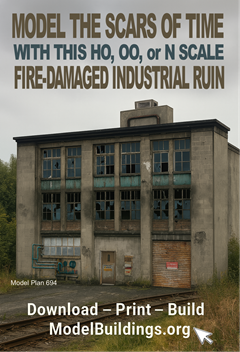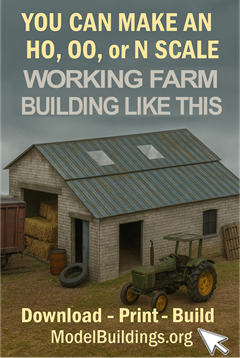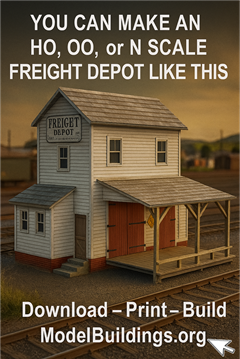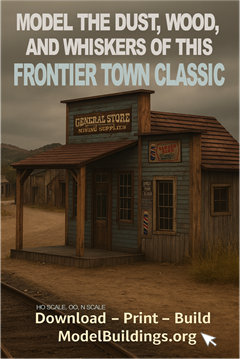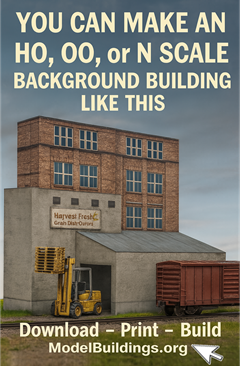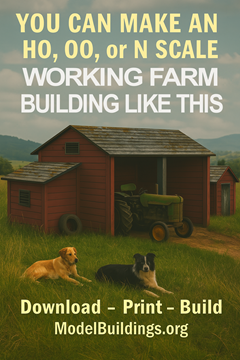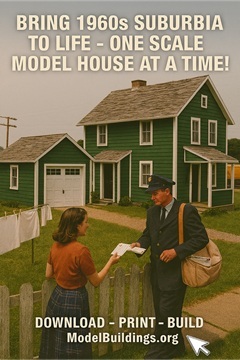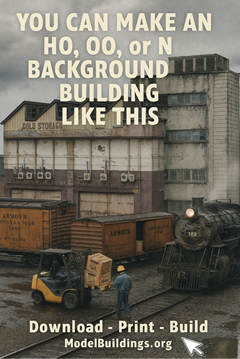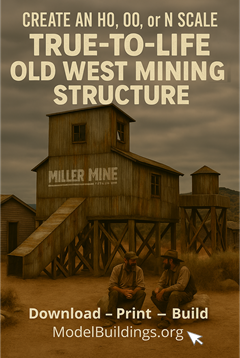Everything on model trains, model railroads, model railways, locomotives, model train layouts, scenery, wiring, DCC and more. Enjoy the world's best hobby... model railroading!
How Would a Dentist Fill The Gaps Between Tracks?
Online Train Club member Joshua is not a Dentist but asks:
“I know when I go to the dentist he tells be to floss between the gaps in my teeth. He doesn’t seem to want to close the gaps, whereas on my railroad that’s precisely what I want to do. I want to leave tiny gaps 1/32th between track to allow for movement, but I have 4 gaps closer to 1/16th. How can I fill these or should I make an appointment with my Dentist? Ha! Ha!”
Track Parts to Identify
 Pradyot hasn’t supplied much information, but has obviously seen this track part on the net:
Pradyot hasn’t supplied much information, but has obviously seen this track part on the net:
“Please identify the item. What’s the use of it? Can it be placed on my N scale D.C. layout? Thanks.”
Keeping Track of Small Parts
Online Model Train Club member Erik shared this suggestion:
“I know some folk in the hobby use masking tape to hold small screws and parts to stop them rolling under the layout and getting lost. It is a very good idea, but I have another option to add to that.
My local hardware store sells small 5″ bowls with a magnet attached. One of these bowl is ideal for holding small steel parts.”
Auto Reverse Module – Digitrax and MRC Cab Controller Compatibility
William posted this question to readers:
“I have On30 and M.E. track and turnouts and DCC Cab Controller. I would like to install an automated reverse loop (does not to be that big as I will be running Porters with a few mining cars.)
I am electronically “challenged” and could use advice on what all I would need to set it up. I am in the planning stage now but I would like to know how to wire the turnout and loop section up front to see how feasible my idea is to have trains running on a continual basis in and out of the loop without needing to be manually operated. Is a module AR1 or the like all that is needed or do I need some type of ‘block’ detection? And are Digitrax and MRC cab controllers compatible as far as these loop modules concerned?”
What Height Should A Water Tower Be?
David models in HO and has this question:
“I want to build a water tower for stream engines. Can anyone give size I need to build one please?”
If you would like to have your question published, simply use the ‘ASK A QUESTION’ link below one of the blog postings. Your question will then be reviewed by the Blog Moderator and when approved will be published. Note – some question don’t get published if they are confusing, lack the necessary details, or have bad spelling etc. It is the Blog Moderators job (a voluntary position) to maintain a good quality for the benefit of all readers.
Trains Ran Well Before Ballasting
Rhalf models HO and has this question:
“My trains were running well until I ballast half the track. Now I find I have no power to the track at all where whereas I did before.
I have been relying solely on rail joiners to transmit current between track sections, so I suspect adhesive or bits of ballast have probably fallen into the joiners somewhere on the track…creating an insulated joint.
Do I need to solder the rail joiners to the track? If so, how far apart? I thought maybe I should add a feeder to each section of track giving each its own power supply? Feedback would be good.”
Truck and Coupler Replacement on Passenger Cars
Robert M models N scale and asks:
“I am just starting out in model railroading and would like to change the trucks on my passenger cars to 6 wheel trucks with knuckle couplings. I am not sure what would work best and would appreciate any advice and suggestions. I have little knowledge in terms so it would have to be rather straight forward. Thanks.”
Adhesives for Wiring a Slip Switch to Control a Model Railroad Turnout
Bert poses this question and hopes for feedback from knowledgeable model railroaders:
“I want to use a slip switch to control a model railroad turnout. I have fabricated linkages using Evergreen Styrene and heavy florist wire. The connection between the turnout points and the slip switch is two pieces of wire connected with a styrene tube forming one continuous rod. Try as I may, I have yet to find an adhesive that will significantly bond the wire inside the styrene tube. Even though I allow an adhesive to cure for 24 hours, after a few toggles on the switch, the wire becomes loose and is no longer attached.
Any thoughts on what adhesive I should pursue? Thus far I have used Insta-Cure CA Super Thin, Maxi-Cure CA Extra Thick, Tamiya Extra-Thin Cement, and Red Baron Adhesive (Thin and Medium).
If the wire/styrene combo will not work, I’ll have use another alternative. Thanks in advance for your thoughts and suggestions.”
0 and 0-27 Gauge Tubular Track
Bill asks readers:
“I am getting back into the hobby after 50+ years so I have numerous simple minded questions. Want to keep my Marx 999 on 0-27 gauge tubular track and I am thinking about going to Fastrack 0 gauge for my Lionel 1615. Do they still make 0-27 gauge tubular track? Where can you buy it new?”
Spot The Difference – Layout at Australian Model Railway Show
I’ve had several requests to run some more SPOT THE DIFFERENCE puzzles as it’s been some time since I ran the last one. See how you go with this photo taken at a model train show in Queensland, Australia. The scene features a small country town. At first glance the photos look identical, but there’s actually 9 differences. How many can you find?
Simply add your answers using the COMMENTS link below.
Connecting a DCC System to the Track
Don has this question for readers:
“Until now I have been totally DC, but thought I might test the waters with DCC. I recently purchased a Bachmann GP9 DCC locomotive and am running it in DC mode.
I’m just now sure how DCC systems get connected to the track. Are they connected the with two wires like on DC? And, if at any time I want to disconnect the DCC system and reconnect my DC transformer so I can operate my older my DC locomotives, can I do that? Depending on how I get on I might look at converting a couple of my older DC engines as I understand that’s possible?”
What To Use To Clean Railroad Track
John asks:
“What product(s) should I use to clean track and wheels?”
Problems With Class 42 Warship Diesel Mainline Make
Edward seeks help from fellow OO gauge enthusiasts:
“Hi everyone, I’m having problems with my Class 42 Warship Diesel loco. When it goes round my inside layout with r605 curves and single curves of same radius, the bogies jump of the track. Does anyone else had this problem? I’ve checked wheels for correct flange width. I checked the track, and all looks okay. Any suggestions would be helpful. Thanks. Edward”
Electrical Connections For LEDs
Bert used the ‘Ask a Question’ link to post this question:
“I purchased individual strands of battery powered (2AA) micro lights from a Christmas closeout. I intend to use a SPDT slide switch to control turnouts with one terminal lighting a red LED and the other terminal lighting a green LED. A wire from the switch arm will be used to throw the turnout. I plan to cut the strands into individual LED lights and solder them to the proper terminal such that when the turnout is changed, the correct LED is on. I’ve read that LEDs have long and short terminal legs but there is no way to identify them on the encased light strand. Any thoughts and comments regarding electrical connections would be greatly appreciated as I am an electrical novice. Thanks for your help in advance.”
Disclaimer: Obviously, readers are advised to seek proper technical advice from a registered electrician for any job that involves live wires that could result in injury caused by an electrical shock.
Train Operating Sessions – Do You Have A System?
It would be interesting to hear some different views on train operation methods. There will probably be many differing views. You can add your comment or suggestion using the COMMENTS link below.
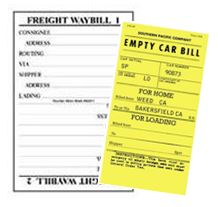 For example; when you operate your trains do you start each session with the trains staged, or have you masterminded your operations plan thoroughly enough to enable you to complete each op session, and then start off from precisely where you left off the night before?
For example; when you operate your trains do you start each session with the trains staged, or have you masterminded your operations plan thoroughly enough to enable you to complete each op session, and then start off from precisely where you left off the night before?
When you operate your railroad alone, do you use waybills, car cards, and a train sheet so you can begin the next time at the mark where you concluded last time?
Or, when you operate your trains with friends, do you start off each op session with the first moving train in the morning? This is presuming you have pre-positioned trains in the yard so that crews have a ‘soft’ start. Do you finish every session with the last train for the night? Or, when ‘time is up’ do you pick-up the session at a later stage?
Or, do you prefer to just run your trains with no real system in mind.
To be honest; there really are no right or wrong answers, so long as you are having fun and don’t cause a pile-up or derailment that could damage your trains or layout.
Those are just some possible scenarios that you might personally adopt, or that you might have at least considered.
Share your thoughts on op sessions and how you personally like to operate the trains on your layout by adding a comment (or advice) in the COMMENTS below this posting.
Peco Electrofrog Turnouts
Christopher has this question:
“When I first got in to DCC I bought all electrofrog turnouts for my N scale layout. Then the guy at the Hobby Shop told me I should’ve used insulfrog turnouts. Is there anyway that I can still use the electric frogs? If so how do I stop them from shorting out the track?”
Electric Pick-Up Wires for 2-Rail O-Scale Loco
Oscaler Jack asks:
“I need to add electrical pickup for both rails on a 2-Rail O-Scale power truck (and non-powered truck) and can’t seem to find available sources. I have been using phosphor bronze wire that I’ve jury-rigged for this problem but want a better solution.”
Battery Powered Trains
Bill shares his thoughts with readers:
“For some years now I have been wondering why we don’t convert to battery powered trains powered by lithium rechargeable batteries. The loco could be controlled by a transmitter as is used for RC planes. The loco could simply be parked on a battery recharging section of track when the battery runs down. Imagine the headaches removed when track no longer needs to be wired. Are any manufacturers considering this?”
Add your comment below.
